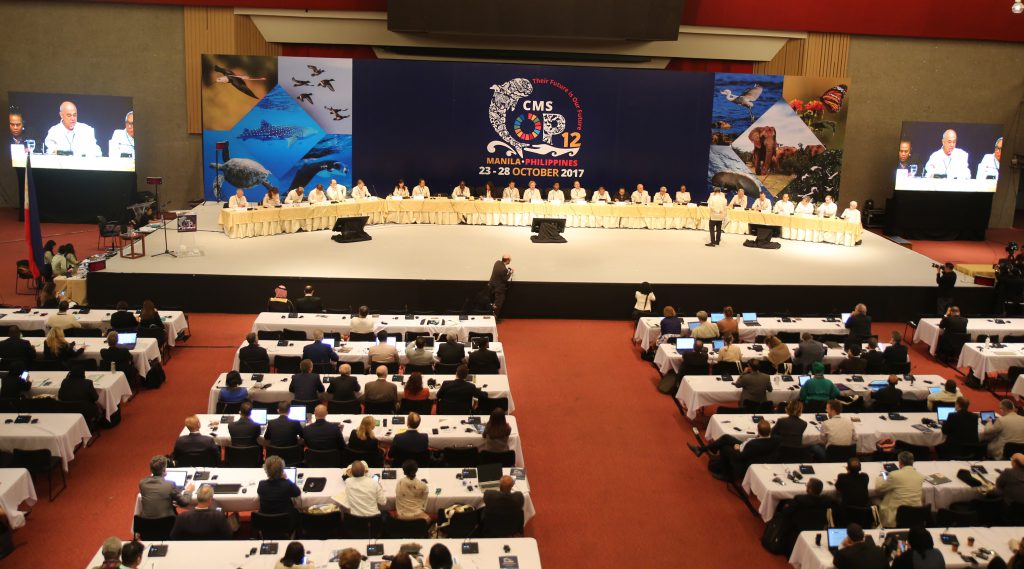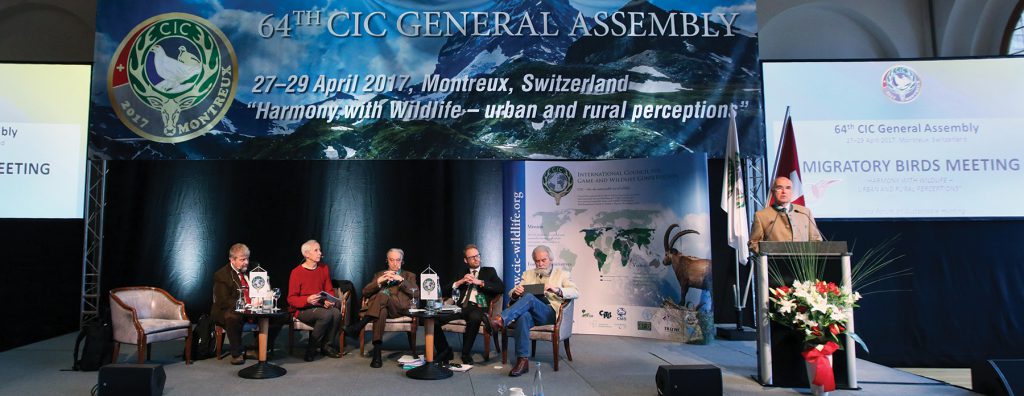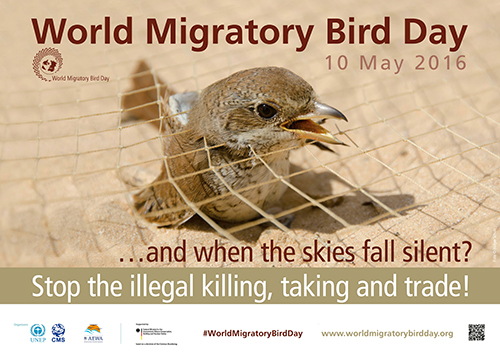This core working area addresses the complex issues around migratory birds and mammals.
In mammalian species the present focus is given to Caprini and Antilopinae in Central and Western Asia as well as the elephants and certain Antilopinae of Africa (cross-over with Big Game. The CIC and the Division Applied Science as an institutional member of the Saiga Conservation Alliance works on the protection and conservation of the saiga, one of the most threatened ungulates on the planet.
In the field of migratory birds the enormous natural resource of hundreds of species and millions of specimens has always been and still is exploited by man under regimes of subsistence and recreational hunting. The total annual harvest is unknown, but counts millions of birds. Focus is placed on international cooperation in the sustainable management of migratory birds, including accurate monitoring of harvest levels (cross-over with Small Game and Wildlife Diseases). Presently the core working area is concentrating on the Western Palearctic and East Atlantic flyways, while expanding its activities to East Asia (Siberia). The sector assumes a technical and scientific role based on networking and co-ordination with national, regional and international governmental and non-governmental bodies through symposia, workshops etc.
Wetlands International, The Convention on the Conservation of Migratory Species of Wild Animals (CMS). and The African-Eurasian Waterbird Agreement (AEWA) are key co-operating organisations. The CIC holds a seat in the Technical Committee of AEWA.
New CIC State Member – the Republic of Malta
16 August 2019
Leider ist der Eintrag nur auf Englisch. Der Inhalt ...
Die Erfolgreichen werden an den Rand gedrückt!
Das Übereinkommen zur Erhaltung der wandernden wildlebenden Tierarten (CMS) der ...
CIC at the High Level Ministerial Panel at the CMS COP12
24 October 2017
Leider ist der Eintrag nur auf Englisch. Der Inhalt ...
World Migratory Bird Day 2017 – George Aman made a statement on the importance of migratory birds
10 May 2017
Leider ist der Eintrag nur auf Englisch. Der Inhalt ...
Zugvogel-Sitzung – in Richtung eines Adaptiven Managements der Wandernden Wasservögel
Im Rahmen der 64. Generalversammlung in Montreux hat der Internationale ...
Weltweiter Zugvogel-Tag 2017 – CIC-Malwettbewerb für Kinder
Der Internationale Rat zur Erhaltung des Wildes und der Jagd ...
Intergovernmental Task Force Announced – World Migratory Bird Day 2016
10 May 2016
Leider ist der Eintrag nur auf Englisch. Der Inhalt ...
Avian influenza threat and the role of wild birds
8 December 2014
Leider ist der Eintrag nur auf Englisch. Der Inhalt ...







